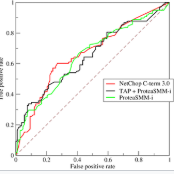Background subtraction (BGS) is a common choice for performing motion detection in video. Hundreds of BGS algorithms are released every year, but combining them to detect motion remains largely unexplored. We found that combination strategies allow to capitalize on this massive amount of available BGS algorithms, and offer significant space for performance improvement. In this paper, we explore sets of performances achievable by 6 strategies combining, pixelwise, the outputs of 26 unsupervised BGS algorithms, on the CDnet 2014 dataset, both in the ROC space and in terms of the F1 score. The chosen strategies are representative for a large panel of strategies, including both deterministic and non-deterministic ones, voting and learning. In our experiments, we compare our results with the state-of-the-art combinations IUTIS-5 and CNN-SFC, and report six conclusions, among which the existence of an important gap between the performances of the individual algorithms and the best performances achievable by combining them.
翻译:背景减法( BGS) 是用视频进行运动探测的一种常见选择。 每年发布数百个 BGS 算法,但结合这些算法以探测运动基本上仍未被探索。 我们发现,组合战略允许利用大量可用的 BGS 算法,并为绩效改进提供了巨大的空间。 在本文中,我们探索了通过6种战略实现的一系列业绩,6种战略结合了2014年CDnet数据集上26种不受监督的 BGS 算法的输出,这些产出在ROC空间和F1分上都是如此。 所选择的战略代表了一大组战略,包括确定和非确定性、投票和学习。 在我们的实验中,我们将我们的结果与IUTIS-5和CNN-SFC的先进组合进行了比较,并报告了6项结论,其中个人算法的性能与通过合并能够取得的最佳性能之间存在重大差距。


